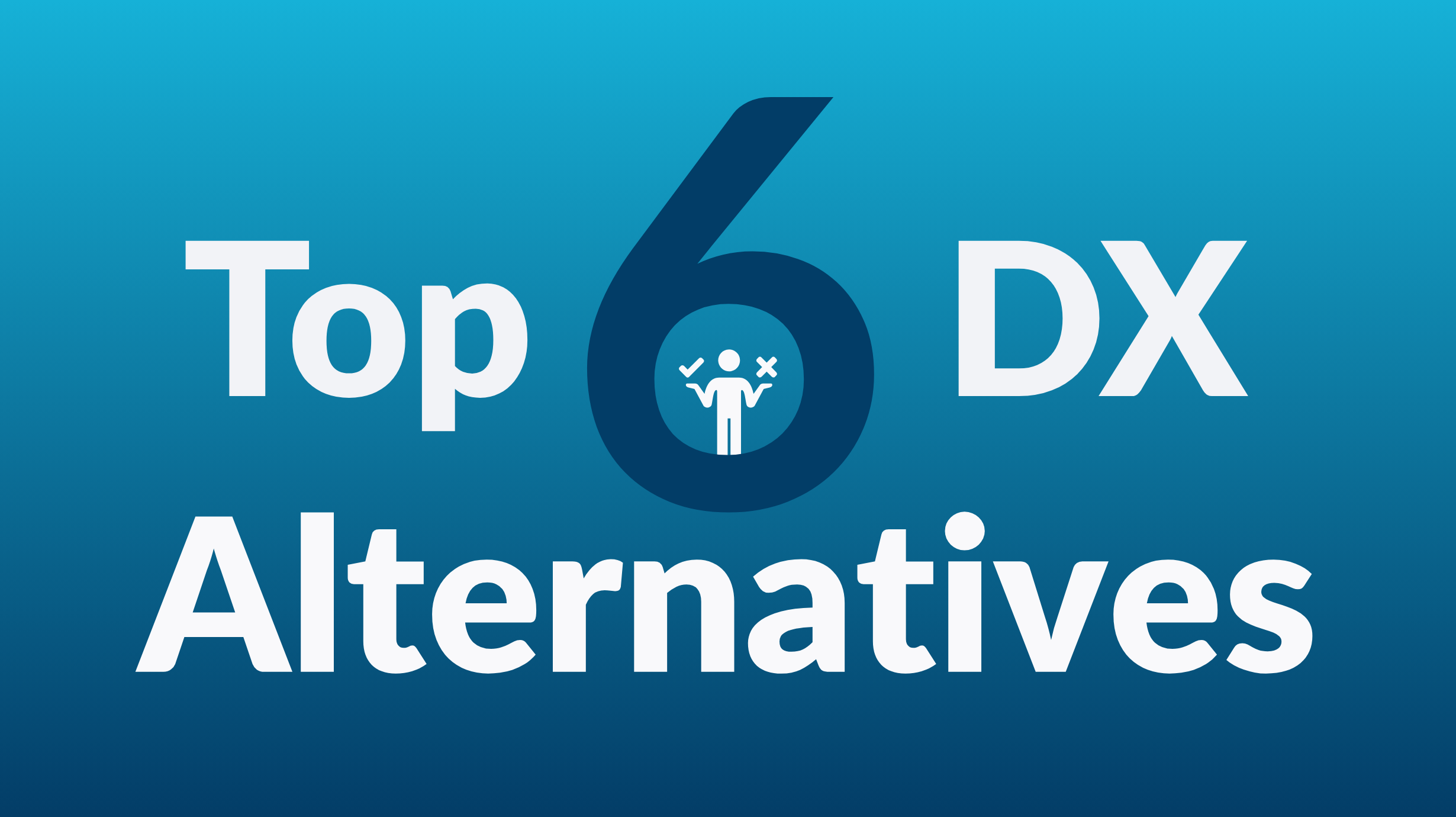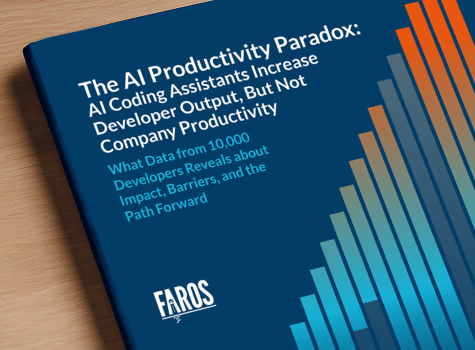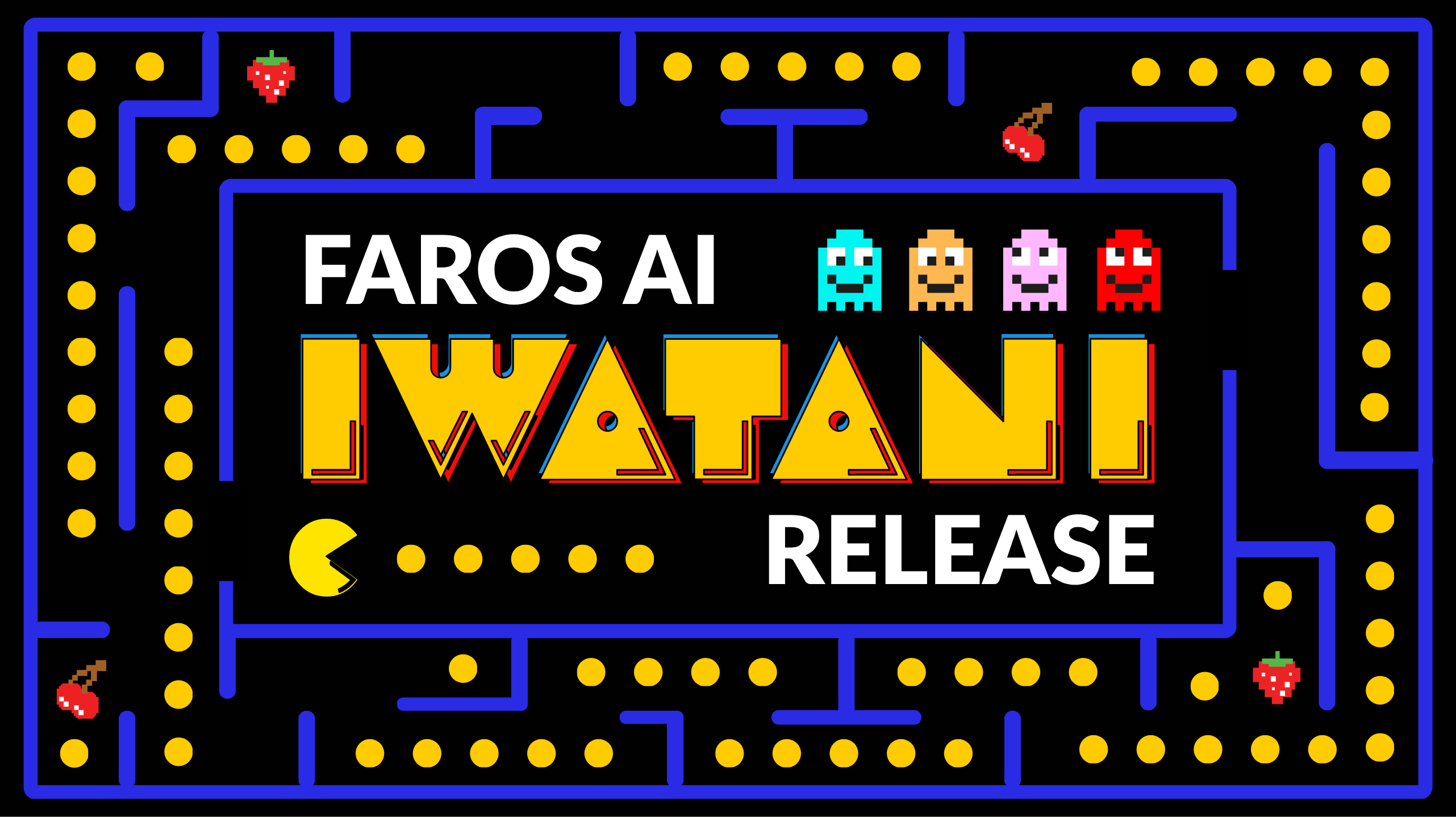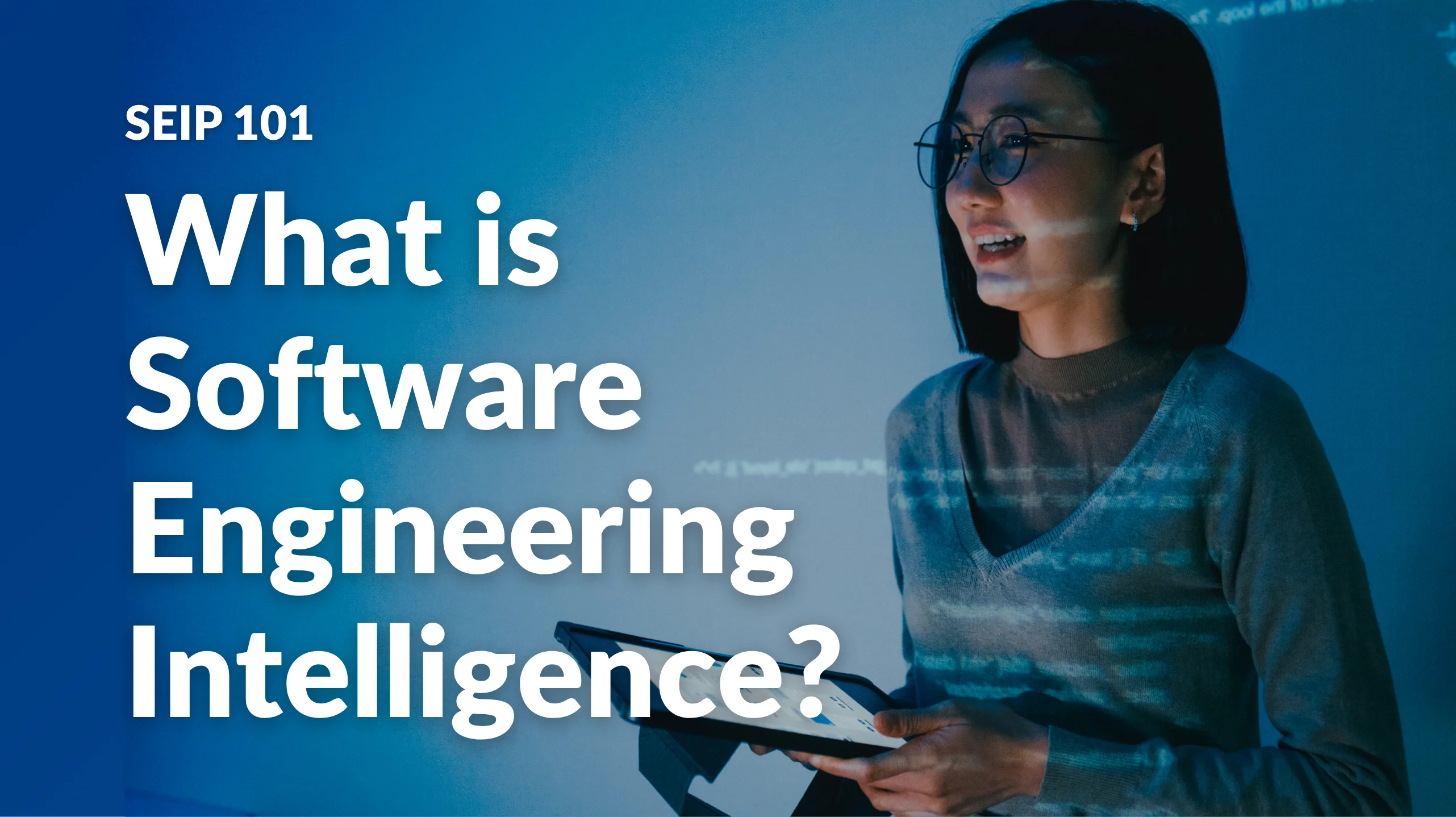TL;DR: Choosing an engineering intelligence platform isn’t one-size-fits-all. Faros AI is the best GetDX alternative for enterprises, offering the power and flexibility large organizations require. For SMBs, cost and time-to-value often dominate, and other tools can be a better fit. This guide reviews GetDX alternatives to help you decide.
What is GetDX and why look for an alternative solution?
GetDX is an engineering intelligence platform designed by software engineering researchers that helps organizations measure and improve developer productivity. The platform combines both qualitative and quantitative metrics, integrating data from development tools like GitHub and Jira with self-reported developer feedback to provide comprehensive insights into productivity drivers and friction points.
But if you're reading this, you're likely exploring alternatives to DX for one of several compelling reasons:
- Dissatisfaction with DX: While GetDX offers solid analytics, it presents numerous operational and scalability challenges. Its heavy reliance on developer surveys introduces bias, fatigue, and ongoing program overhead. DX’s frequent product changes and limited feature stability can disrupt teams, while maintaining accurate team configurations often requires significant manual effort. While DX’s survey programs can scale to large organizations, its telemetry-based data capabilities are not designed for the complex, heterogeneous systems typical of enterprises with thousands of engineers or global operations.
- Atlassian’s acquisition of DX: Atlassian's acquisition of DX in September 2025 brings about new considerations for existing DX customers. While acquisitions can bring benefits, they also introduce platform lock-in risks—particularly given Atlassian's extensive ecosystem of products. Teams that value vendor independence or have concerns about future pricing changes, integration priorities, or product direction are now reassessing their options. The uncertainty around how DX will evolve within Atlassian's portfolio has prompted many organizations to explore GetDX alternative solutions that offer more stability and long-term control.
- Running a DX POC that's falling short: Perhaps you're in the midst of evaluating GetDX, but finding the implementation is taking too long or that the metrics don't suit your needs or meet your expectations. Time-to-value matters, and if your POC isn't demonstrating clear benefits within your evaluation window, it's worth exploring other platforms that might better match your team's workflows, data requirements, and timelines.
- In the market for an engineering intelligence platform: If you're new to engineering intelligence platforms, you're likely conducting thoughtful research to understand the category and evaluate your options. For enterprises, top considerations typically include:
- Alignment with organizational structure and culture: A platform that fits your company’s size, operating model, and ways of working.
- Seamless data integration: Effortless collection and unification of data from diverse tools and systems across a complex engineering ecosystem.
- Customization and flexibility: The ability to tailor metrics, dashboards, and actionable insights to reflect your organization’s unique priorities and workflows.
- Enterprise-grade scalability: Capacity to handle the scale, complexity, and evolving needs of modern engineering organizations.
The engineering intelligence market has matured significantly. Understanding the tradeoffs between different platforms is essential to making the right investment.
In this guide, we'll introduce you to the six leading GetDX alternatives, breaking down their strengths, key capabilities, and limitations to help you find the platform that best serves your engineering organization.
The 6 Best GetDX Alternatives and Solutions for Engineering Leaders
Faros AI: The best GetDX alternative for enterprises
Faros AI is a complete engineering intelligence platform for optimizing engineering workflows and the developer experience.
With no prerequisites to refactor or standardize data in advance, Faros AI analyzes task, coding, deployment, quality, incident, security, org structure, and survey data from 100+ tools and custom sources. It delivers critical insights, identifies friction and root cause, and suggests recommendations on how to improve.
The Faros AI platform is the best GetDX alternative for enterprises because it’s built to meet the complex needs of engineering at scale—offering security, flexibility, and high performance. Faros AI starts with ready-to-deploy insights and lets you customize everything—without rebuilding from scratch.
Faros AI offers 3 out-of-the-box products:
Engineering Efficiency from Faros AI provides engineering executives, platform engineering teams, and AI leaders with the insights they need to improve velocity, quality, and team health at scale. It comes with prebuilt dashboards for DORA, SPACE, DevEx and other leading frameworks and can be tailored to your needs.
- Uncover hidden bottlenecks: Diagnose and resolve blockers in tools, infrastructure, and collaboration to increase velocity.
- Elevate code quality: Monitor code coverage, test flakiness, change failure rate, and MTTR to improve customer satisfaction.
- Create seamless workflows: Understand developer pain points, corroborate surveys with telemetry, and eliminate friction to avoid burnout.
AI Transformation from Faros AI provides the most intelligent and comprehensive solution for understanding the impact of AI technology on the efficiency and effectiveness of large engineering teams.
- Quantify AI impact: Unlike other solutions, Faros AI applies causal analysis to reveal how AI coding assistants and agents impact productivity, quality, and developer experience—isolating real ROI from noise and confounding factors.
- Confidently accelerate adoption: Pilot, learn, and scale using a results-driven framework to ensure AI adoption sticks, with built-in gamification, enablement, and executive visibility.
- Stay in control: Maintain enterprise-wide safety and quality with IDE-level guardrails, real-time monitoring of code security and health, and alerts with recommendations when gains stalls or bottlenecks emerge.
Delivery Excellence from Faros AI builds transparency, predictability, and consistency across cross-team engineering initiatives so teams stay focused, stakeholders stay informed, and strategic commitments land on time.
- Deliver on time, every time: Stay on schedule with centralized progress tracking and forecasting for cross-team initiatives.
- Optimize resource allocation: Create realistic plans with AI-powered insights into team capacity, workloads, and constraints.
- Get ahead of blockers: Track dependencies in real time and surface delays early—before they impact your roadmap.
Faros AI is the best GetDX alternative for enterprises because it’s a stronger large-scale data platform for developer productivity.
- Facts over feelings: Faros AI leads with objective metrics and layers in developer sentiment as a secondary lens. DX centers on surveys and is vulnerable to multiple biases and distortion.
- Actionable: Faros AI delivers highlights, lowlights, and improvement recommendations to your inbox. DX nurtures leaders but leaves directors and managers wondering what to do next.
- Trustworthy: Faros AI keeps your org charts fresh and correctly attributes data to the right team, even when ICs move around. DX creates significant data distortions that prevent accurate impact assessments and erode engineers’ trust.
- Enterprise-ready: Faros AI has 2x connectors, better support for non-standard deployment flows, and seamless integration for bespoke developer tools and on-prem systems.
- Implementation speed: Faros AI proves value in a 2-week POC, while DX requires months-long rollouts that delay results and strain resources.
- Customizable: The Faros AI experience can be tailored to your context, goals, and priorities. Creating custom metrics is easy with prebuilt components and base metrics, compared to DX’s raw and confusing SQL.
Considerations:
- Learning curve: Some users have noted that “Faros AI has a learning curve.” That’s fair: Faros AI is deeply customizable and adapts to your unique goals, operating model, and culture, so there’s a brief setup to get the insights you value most. Off-the-shelf tools can feel faster initially, but they usually stop at generic metrics and surface-level insights. The time you invest getting oriented with Faros AI pays off in decision-grade, team-specific visibility—clear signals on productivity trends, AI impact, and where investments are actually paying off.
- Substance over cosmetics: Some users note that Faros AI doesn’t ship with a long list of vanity metrics or a flashy UI. That’s by design. Faros AI prioritizes useful benchmarks and analytics that ties engineering work to business outcomes. It’s built for organizations committed to data-driven engineering—using objective metrics and analytics to make decisions, allocate resources, and measure performance—rather than gut feel or incomplete data.
LinearB is an engineering intelligence platform that helps software teams improve delivery performance through metrics and automation. It connects to existing dev tools (like Git, Jira, and CI/CD) to surface key engineering metrics, identify bottlenecks, and streamline workflows. By bridging technical execution with business outcomes, LinearB enables engineering leaders to optimize team efficiency, predictability, and impact at scale.
What are the key features of LinearB?
- Comprehensive engineering visibility: Real-time DORA and productivity metrics with benchmarking, helping teams pinpoint bottlenecks and measure improvement.
- Workflow automation and AI insights: Automates PR routing, reviews, and policy enforcement to reduce friction and operationalize continuous improvement.
- Business alignment and enterprise readiness: Connects engineering performance to business outcomes, with enterprise-grade security, compliance, and executive reporting.
What are the limitations of LinearB?
Swarmia is a software engineering intelligence platform that helps organizations improve business outcomes, developer productivity, and developer experience with research-backed metrics and actionable insights. It emphasizes DORA/SPACE-aligned measurement, team-level visibility, and tools to streamline code review and delivery flow.
What are the key features of Swarmia?
- Research-backed engineering metrics & dashboards: Track a balanced set of org- and team-level metrics (including DORA/SPACE) with productized views for “engineering effectiveness.”
- Real-time pull-request flow analytics: Decompose PR cycle time (in-progress, review, time-to-merge), monitor open PRs across repos, and use insights to accelerate reviews.
- Straightforward, modular pricing (incl. free tier): Public pricing with a per-developer plan and modules for business outcomes, developer productivity, and developer experience; free plan available for small teams.
What are the limitations of Swarmia?
Code Climate is an engineering intelligence platform that helps teams measure and improve software delivery and code quality. Its Velocity platform ingests data from the tools where engineers work to provide actionable insights (including DORA metrics) and benchmarking across capacity, delivery, quality, and more. Its Quality product automates code review by analyzing maintainability and test coverage, delivering feedback in pull requests and CI to prevent regressions.
What are the key features of Code Climate?
- PR and code-review flow analytics: Detailed views of review health and PR lifecycle (e.g., initial review patterns, “rubber-stamp” approvals, time to open/merge) to spot bottlenecks.
- DORA metrics and delivery dashboards: Built-in definitions and tracking (e.g., Deploy Frequency) so teams can measure and improve software delivery performance.
- Integrations and traceability to work items: Native support for major VCS (GitHub, GitLab, Bitbucket, Azure Repos) and Jira linking so commits/PRs map to issues for end-to-end visibility.
What are the limitations of Code Climate?
Flow vs GetDX
Flow (previously Pluralsight Flow) is an engineering intelligence platform designed to help engineering managers measure software developer productivity based on data from GitHub, GitLab, BitBucket or any Git based code repository. Flow turns commit, ticket, and PR data into insights to help teams ship faster, collaborate better, and stay aligned with business goals.
What are the key features of Flow?
- Workflow diagnostics: Built-in guidance on signals like queue time, backflow, and rework to pinpoint bottlenecks and reduce friction.
- DORA metrics (and more) all in one place: Keep distributed teams in sync while tracking DORA and developer-workflow metrics together to accelerate delivery.
- Investment and business alignment: Makes engineering work visible to executives—show how time maps to customer value, justify headcount, and track progress on strategic goals.
What are the limitations of Flow?
Jellyfish is a software engineering intelligence platform that ingests signals from Jira and Git to give leaders visibility into engineering work and outcomes. It’s positioned to align engineering efforts with business priorities, track progress, and help teams spot bottlenecks and focus on the highest-priority initiatives. Its most useful for technical program managers who oversee initiatives and resource allocation.
What are the key features of Jellyfish?
- Engineering metrics and operational visibility: Provide real-time insights into performance, progress, and bottlenecks so leaders can coach teams and improve delivery.
- Resource allocation and investment tracking: Measure where engineering time is going across initiatives to ensure work aligns with business needs.
- DevEx surveys with built-in analysis: Launch standardized surveys, segment results by team/role/tenure, and correlate sentiment with engineering metrics to target where to improve.
What are the limitations of Jellyfish?
Faros AI — The best GetDX alternative for enterprises
Faros AI is a complete engineering intelligence platform that optimizes workflows and developer experience without forcing you to refactor or standardize data first. It unifies signals from 100+ tools—tasks, code, deployments, quality, incidents, security, org, and surveys—to surface critical insights, expose friction and root causes, and recommend next steps. Built for enterprise scale, Faros delivers secure, high-performance analytics with ready-to-use views you can fully tailor—no rebuilding required.
Ready to see the difference? Schedule a demo today.







